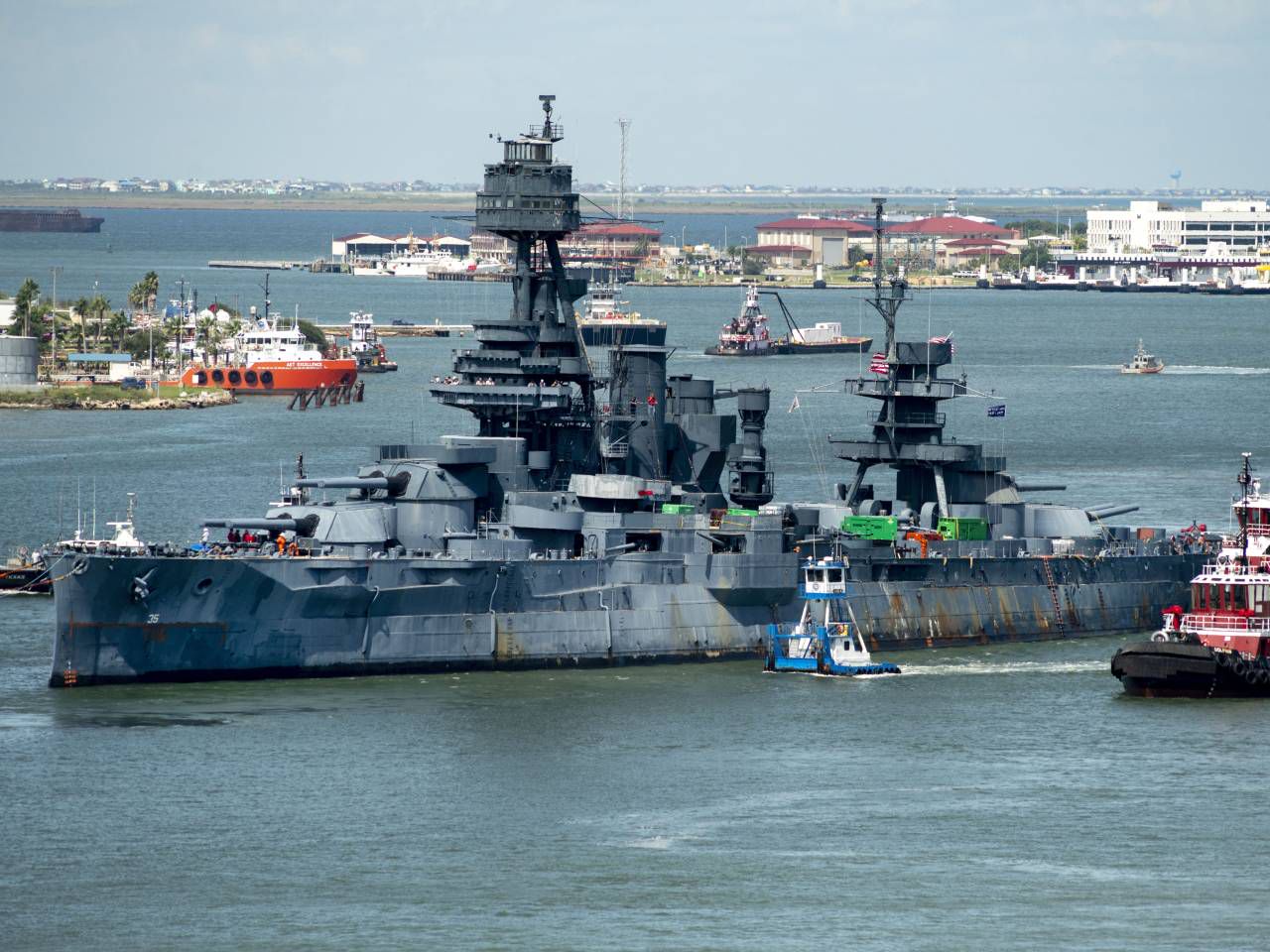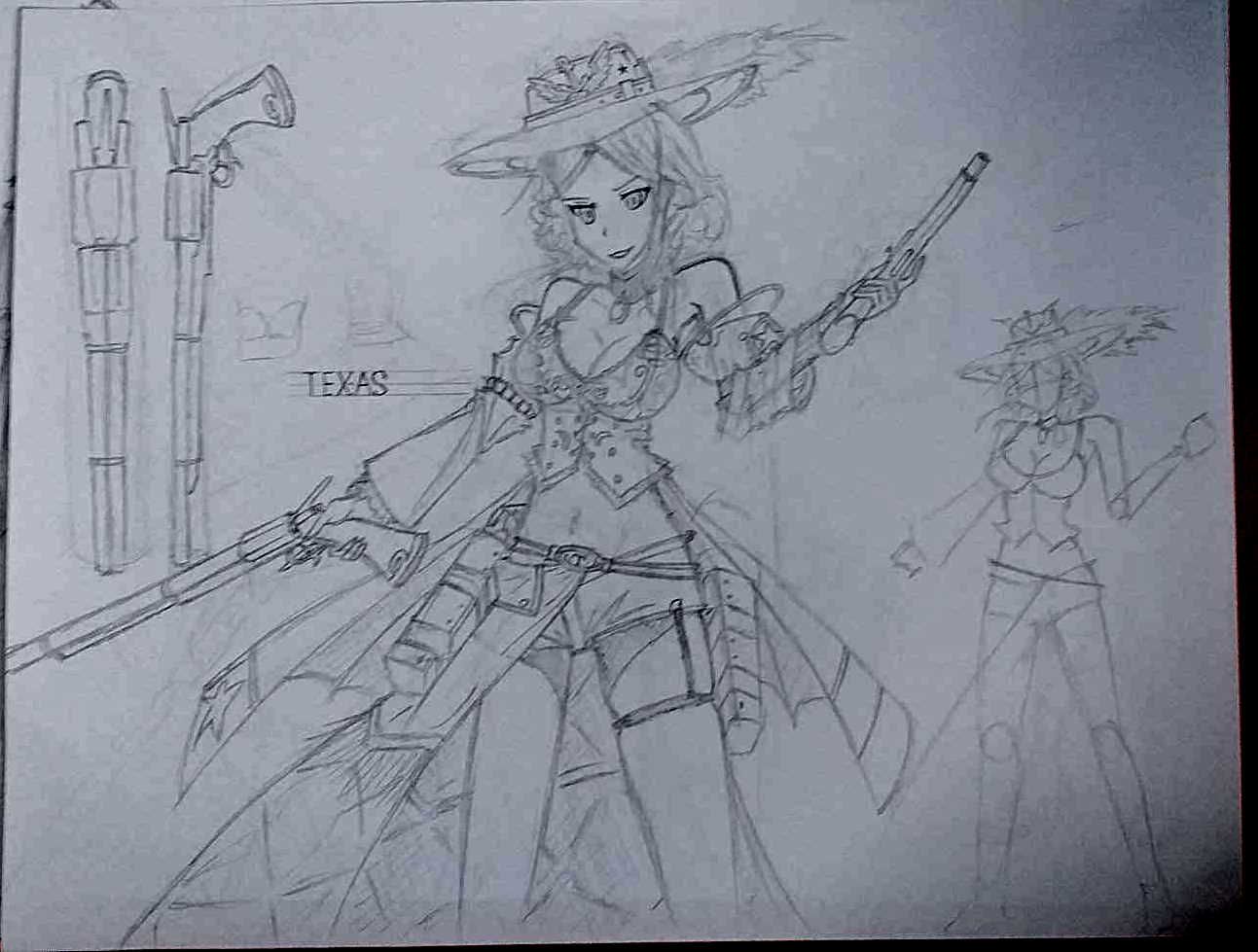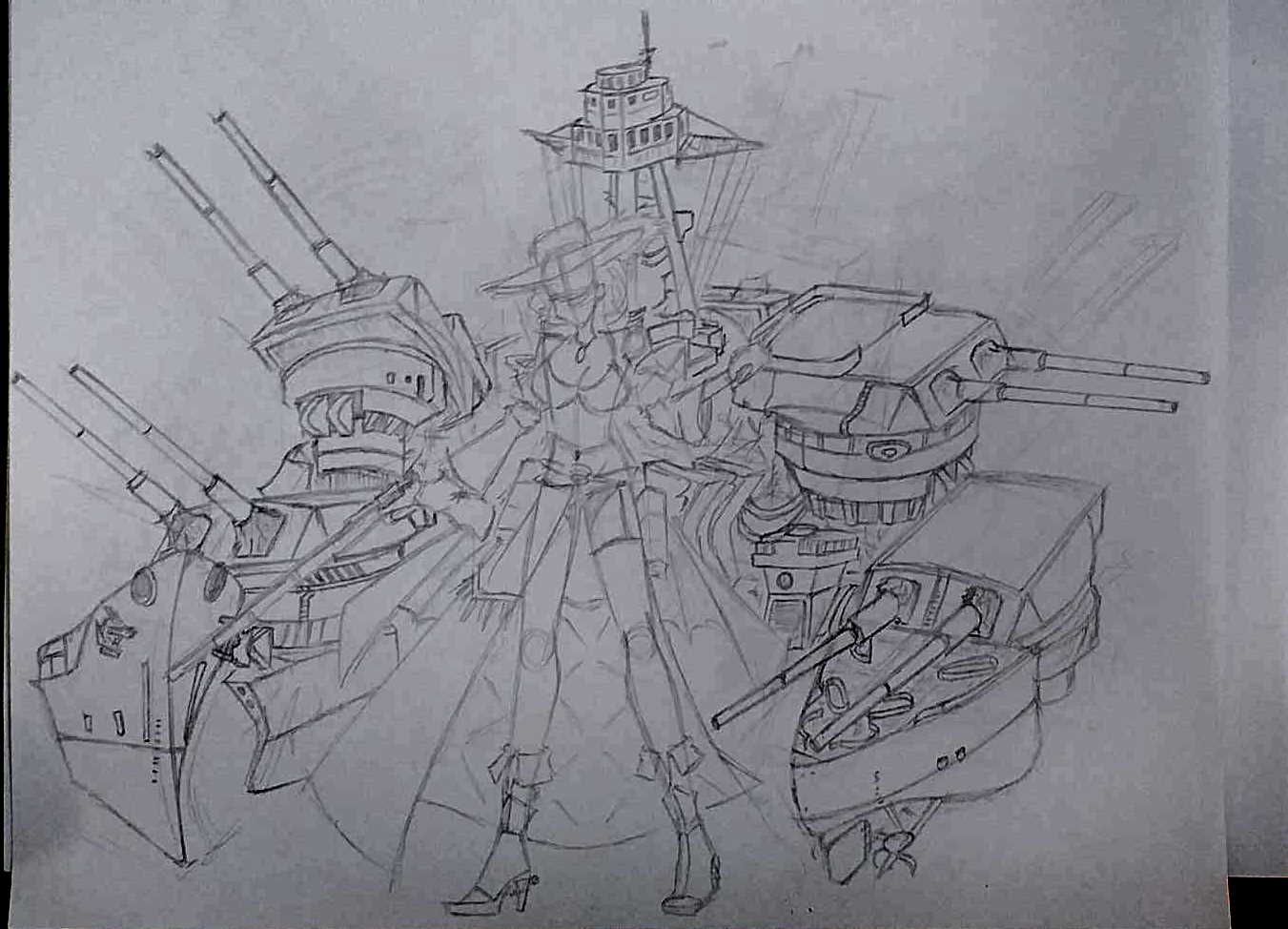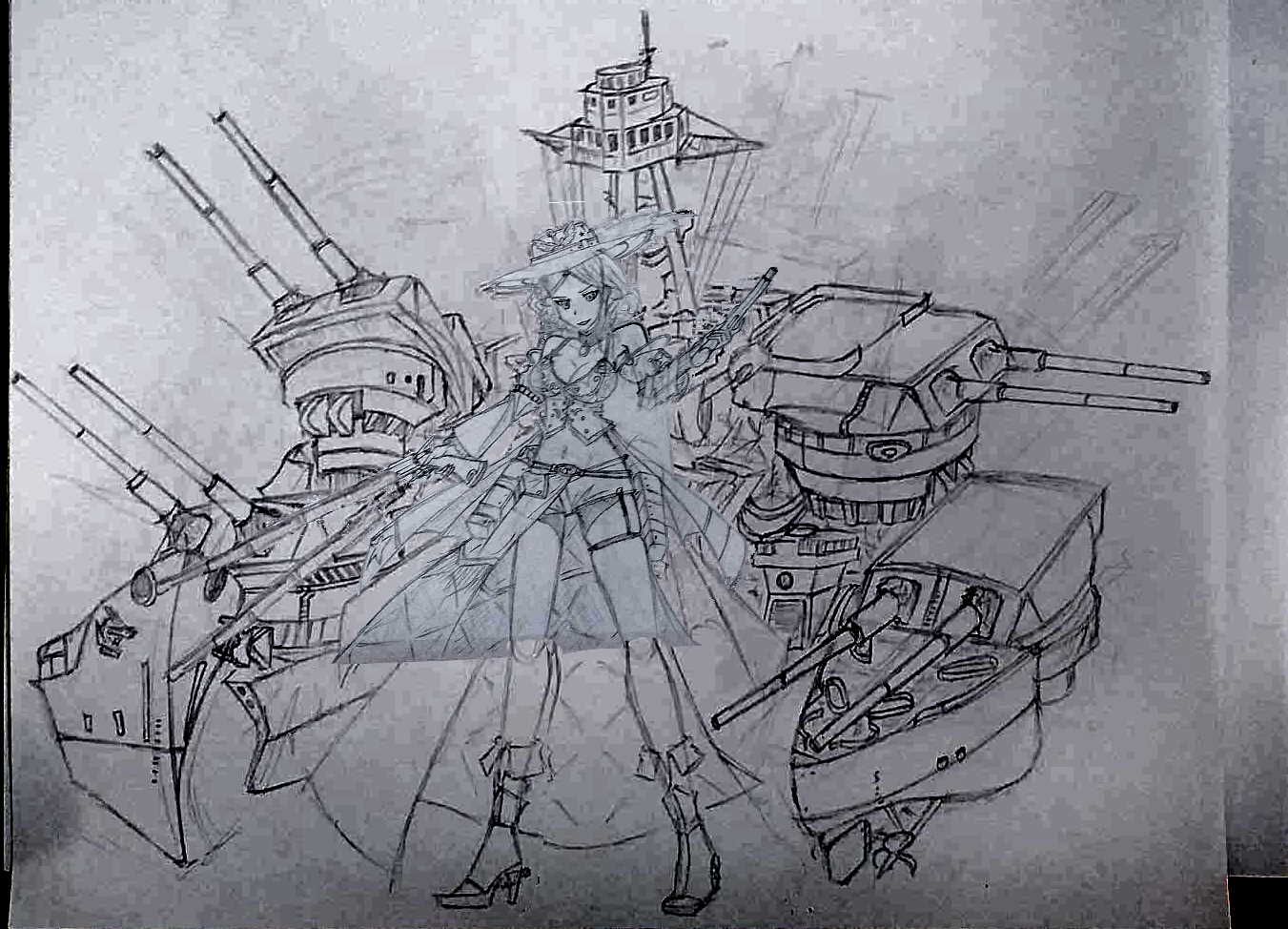Bio #7: U.S.S. Texas (BB-35)
Ship Bio #1: Class and Service
U.S.S. Texas (BB-35) is the 2nd sister ship of the New York-class battleships. Like her older sister, she was built around the 1910s and entered service during World War 1. She was also built to carry the 14-inch (356 mm)/45-caliber gun.
U.S.S. Texas (BB-35) was also known to be a technological testbed, this is because she was the first battleship to mount anti-aircraft guns, the first US warship to control gunfire with directors and range-keepers, the first US battleship to launch an aircraft, and one of the first US Navy warships to receive production radar.
Upon her return to active duty with the fleet, Texas resumed a schedule alternating between training operations along the New England coast and off the Virginia Capes and winter fleet tactical and gunnery drills in the West Indies. That routine lasted just over two years until the February-to-March crisis over unrestricted submarine warfare catapulted the US into World War I in April 1917. The April 6 declaration of war found Texas riding at anchor in the mouth of the York River with the other Atlantic Fleet battleships. She remained in the Virginia Capes–Hampton Roads vicinity until mid-August, conducting exercises and training Naval Armed Guard gun crews for service onboard merchant ships.
She is the most advanced superdreadnought or battleship at that time. To intimidate it more, the U.S.S. Texas was the first US Navy battleship to incorporate marines in its crew. Which means that, battle hardened soldiers took control of the largest and advanced battleship at that time.
In WW1, unlike U.S.S. New York, enemy ships from the Central Powers didn't dare to attack the U.S.S. Texas, so, her service in WW1 isn't eventful.
When WW1 had ended, on July 26, 1919, she entered the Pacific Ocean as part of the newly formed Pacific Fleet and she would spend the next five and half years as a part of Pacific Fleet. On July 17 the following year, she was designated BB-35 under the Navy's newly adopted alpha-numeric system of hull classification symbols.
On July 31, 1925, U.S.S. Texas (BB-35) she entered Norfolk Navy Yard for a major modernization overhaul. The overhaul, which replaced both cage masts with tripod masts, replaced her 14 Babcock & Wilcox coal-fired boilers with 6 Bureau Express oil-fired boilers, added anti-torpedo bulges and upgraded her fire-control equipment, was completed on 23 November 1926.
Also, her AA armament was increased to eight 3-inch guns, and the torpedo tubes were removed. Six of the 5-inch guns were relocated to new main deck casemates at this time. Following completion of her overhaul, Texas was designated the flagship of the United States Fleet and resumed duty along the eastern seaboard.
In 1937, eight 1.1-inch (28 mm) AA guns in two quadruple mounts were added to improve the light AA armament. In December 1938, Texas received for testing the first shipborne radar designed and made by a commercial company, RCA, for the US Navy, the 385 MHz CXZ. In 1941, Texas was one of fourteen ships to receive the RCA CXAM-1 radar.
When WW2 came, the battleship was considered obsolete due to it being 3 decades old, she's no longer the most advanced battleship as compared to other ships such as the Bismarck-class, Yamato-class, and new American fast battleships.
However, her crew has brought and learned 3 decades of experience. Thus her service in the 2nd World War made her a naval legend, being the American battleship to have participated in all 5 theaters of the war.
Her most famous operation was in the D-Day landings, 1944. The U.S.S. Texas takes its position about 12,000 yards off the coastline to which she was tasked like the other warships, to do naval and shore bombardments against enemy fortifications. She fired over 255 rounds over 34 minutes before she ran out of ammo.
She went for a rear detachment in order to get more ammunition at the coast of France and continuing the naval bombardment. When the Allies have driven the enemy so far, her guns can no longer reach any further distance. She went from 12,000 yards to 3,000 yards, the closest to shore that wouldn't end up a "tactical beaching" of the ship. The crew then intentionally flooded the blister tanks of U.S.S. Texas' starboard side. This intentional sinking causes the ship to list, making it possible to change the angle of the guns and allowing the ship to fire at the enemy further inland.
Then in the Pacific Theater, she participated in both the Battle of Iwo Jima and Okinawa.
In the Okinawa campaign, she fired 2,019 fourteen-inch shells, 2,643 5-inch shells, 490 3-inch shells, 3,100 rounds of 40 mm ammunition, and 2,205 rounds of 20 mm ammunition during the Okinawa campaign. On 14 May she departed Okinawa for the Philippines.
She remained in Leyte until after the Japanese capitulation on 15 August. She returned to Okinawa toward the end of August and stayed in the Ryukyu Islands until 23 September. On that day, she set a course for the United States with homeward bound troops embarked as part of Operation Magic Carpet.
Throughout the 2nd World War, U.S.S. Texas (BB-35) earned 5 battle stars and the Presidential Unit Citation.
On 21 January 1946, Texas departed San Pedro and steamed via the Panama Canal to Norfolk where she arrived on 13 February, and soon began preparations for inactivation.
After a long career, being served on both World Wars, she was finally decommissioned on April 21, 1948 and stricken from the Naval Vessel Register in April 30, 1948.
She survived, but not her older sister as U.S.S. New York was sent to Bikini Atoll for Operation Crossroads.
On 17 April 1947, the Battleship Texas Commission was established by the Texas Legislature to care for the ship. The $225,000 necessary to pay for towing her from Baltimore to San Jacinto was the Commission's first task. On 17 March 1948, Texas began her journey to her new anchorage along the busy Houston Ship Channel near the San Jacinto Monument, at San Jacinto State Park, arriving on 20 April, where she was turned over to the State of Texas the next day to serve as a permanent memorial.
U.S.S. Texas then became the first permanent battleship memorial museum in the US. When the battleship was presented to the State of Texas, she was commissioned as the flagship of the Texas Navy.
In 1976, U.S.S. Texas (BB-35) was officially declared as the first battleship to be dlecared in the US as a National Historic Landmark. She was also considered to be "The Last Dreadnought", being the only remaining WW1 era dreadnought/superdreadnought/battleship.
She had a long career as a museum ship, with her exchanging locations, undergoing restorations, and plans for a long overhaul.
However, in 2012, she was recommissioned to participate in the Battle of RIMPAC 2012 where she, alongside her comrades fought against an Alien Armada Fleet from a distant planet. She was badly damaged, being the oldest warship that served in WW1. But thanks to the government, she was taken for an extensive overhaul to rebuild the ship back to its former glory.
In 2022, she was moved to a dry dock in Galveston, Texas to undergo a $35 million dollar repair project. When finished, she will carry the legacy of her older sister and herself.
U.S.S. Texas (BB-35) is mostly connected to U.S.S. Hornet (CV-12) as their human embodiments are that of a foster mother and an adopted daughter. Possibly after the loss of U.S.S. New York (BB-34) and U.S.S. Hornet (CV-8).
Unfortunately, she sunk on Bikini Atoll on July 7, 2054 along with the rest of the warships that are museum ships. Operation CrossXs, U.S.S. Texas will experience the same fate as her older sister all the way back in 1948. She knew that this is the end for the World War 2 Pacific Naval Fleet that fought against a more advanced alien fleet back in 2012.
Ship Bio #2: SHIP

Ship Bio #3: Armaments and Others
As built:
10 × 14 in (356 mm)/45 caliber guns
21 × 5 in (127 mm)/51 caliber guns
4 × 3-pounder 47 mm (1.85 in)/40 caliber saluting guns
2 × 1-pounder 37 mm (1.46 in) guns
4 × 21 in (533 mm) torpedo tubes (submerged)
1945 refit:
10 × 14 in/45 caliber guns
6 × 5 in/51 caliber guns
10 × 3 in/50 caliber gun
10 × quad 40 mm Bofors AA guns
44 × single 20 mm Oerlikon AA guns
Ship Bio #4: HUMAN EMBODIMENT

Nicknames:
1. Mighty T
2. Best in the West
Ship Bio #5: SHIP RIGGINGS

Ship Bio #6: AZUR LANE DESIGN - Drawn by me in 2023

Ship Bio #7: AZUR LANE DESIGN - Official
-NO OFFICIAL DESIGN YET | LOOK FURTHER ANNOUNCEMENTS FOR AZUR LANE-
Bạn đang đọc truyện trên: AzTruyen.Top